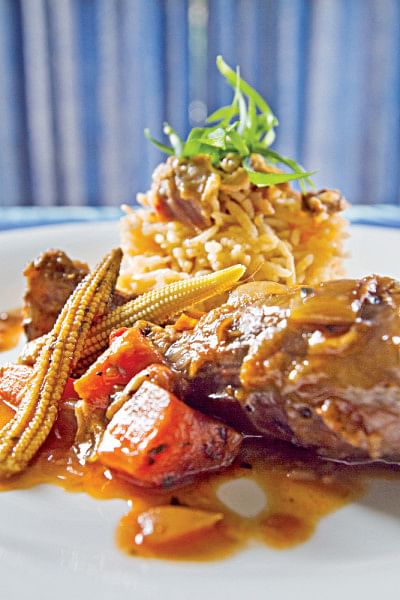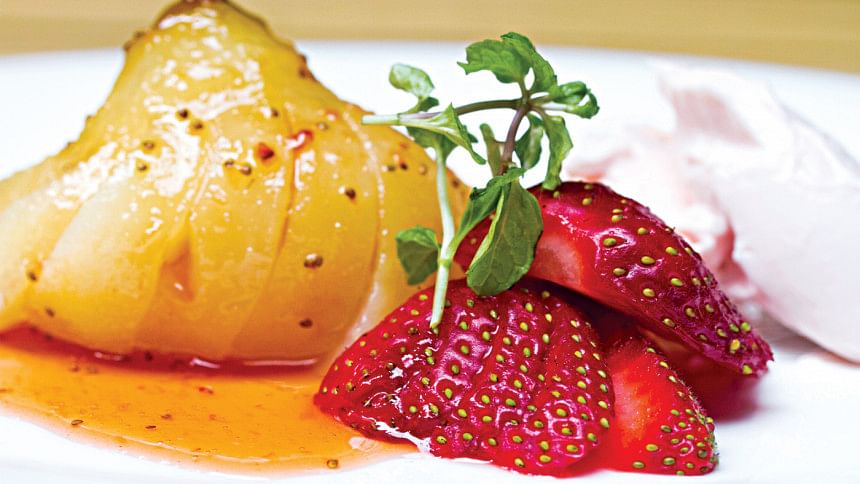Hidden calories in everyday food


Frequently, we receive patients in our chambers with heaps of frustrations that they are starving and depriving their body and souls, suffocating the desire for food, but still failing to make any substantial positive results in terms of weight reduction. Fallaciously, taking foods containing concentrated calories are primarily responsible for this. Whenever one is under a diet plan, whether to reduce weight or due to any other clinical issues, it's very important to ascertain foods of fewer and higher calorie. In our country, there are some vastly preferred common foods which are taken usually just as a snack, but contains good amount of calories. Puffed rice (muri), toast biscuits, dates, nuts, banana, suji, flattened rice flakes (chira), and any deep fried items are just some on this list of calorie-heavy food.

Banana is the most available fruit in our country which contains a good number of calories and carb. For patients who are under weight-reducing diets or diabetic, it must not be considered as a fruit but rather a portion of carb, though it is packed with high nutritional value. Fruit juices are more desirable than whole fruits especially for kids. Because of the lack of fibre, fruit juices carry more calories than the fruits. High fibre fruits and vegetables helps us reduce the daily calorie intake. It also improves the satiety level and reduce hunger pangs. Dried fruits like dates, raisin, prunes, and dried mango pulp are rich source of good amount of calories which are just random finger food for many families in the city area. Anyone who wants to get rid of hidden calories must be aware of high glycaemic index fruits and vegetables. Mango, litchi, jackfruits, grapes, pomegranate, potato, carrot, yam, sweet pumpkin, (all root and tuber vegetables) contain a high glycaemic index. They need to limit the intake of these to restrict the calorie.

Olive oil has enormous health benefits, like reducing bad cholesterol, boost the immune system etc. but also contain high calories. One teaspoon carries about 45kcal. So, having too much olive oil to enjoy its heath benefit would backfire on any weight reduction initiatives. Measurement and restriction in oil should get the highest priority in a low calorie meal plan. The most common mistake that people make is to reduce carb, protein and other categories of food, without keeping count of their daily oil intake through cooking. Oil is the most calorie dense nutrient in the food world. Another calorie dense food item is table sugar. A slight difference in the amount of sugar in a recipe can make a considerable change in the amount of total calories.
Nuts are an abundant source of protein and good fat but they are categorically calorific. So, a handful of nuts everyday on and off would be a good reason for failure in weight management. Chanachur is a highly popular snack item which is rich in both fat and carb. And as it's a dried food, one can take in huge amounts while in social settings with friends and family.

Serving wise, puffed rice (muri) and rice flakes (chira) contain all the nutrients of rice and the same amount of calories except the moisture. Two cups of rice are equal to four cups of puffed rice (muri). But puffed rice doesn't provide hunger-satiety like rice. The same applies to toast biscuits and bread. Two to three slices of bread could be the carbohydrate part of a main meal whereas toast biscuit, which contain the same ingredients and calorie is most of the time eaten in good numbers as a snack.
Dairy cream and thick mayo, butter, ghee and sauces add extensive calories to an otherwise healthy meal. These are often high in sugar or high-fructose corn syrup. Pick the options lower in calories and sugar such as mustard, vinegar, lime juice, hot sauce, garlic, herbs, and spices are almost calorie-free, contain antioxidants and offer lots of flavours. It would also be helpful to cut the extra calorie from a meal and make the meal much healthier.

Photo: LS Archive/Sazzad Ibne Sayed

 For all latest news, follow The Daily Star's Google News channel.
For all latest news, follow The Daily Star's Google News channel. 



Comments